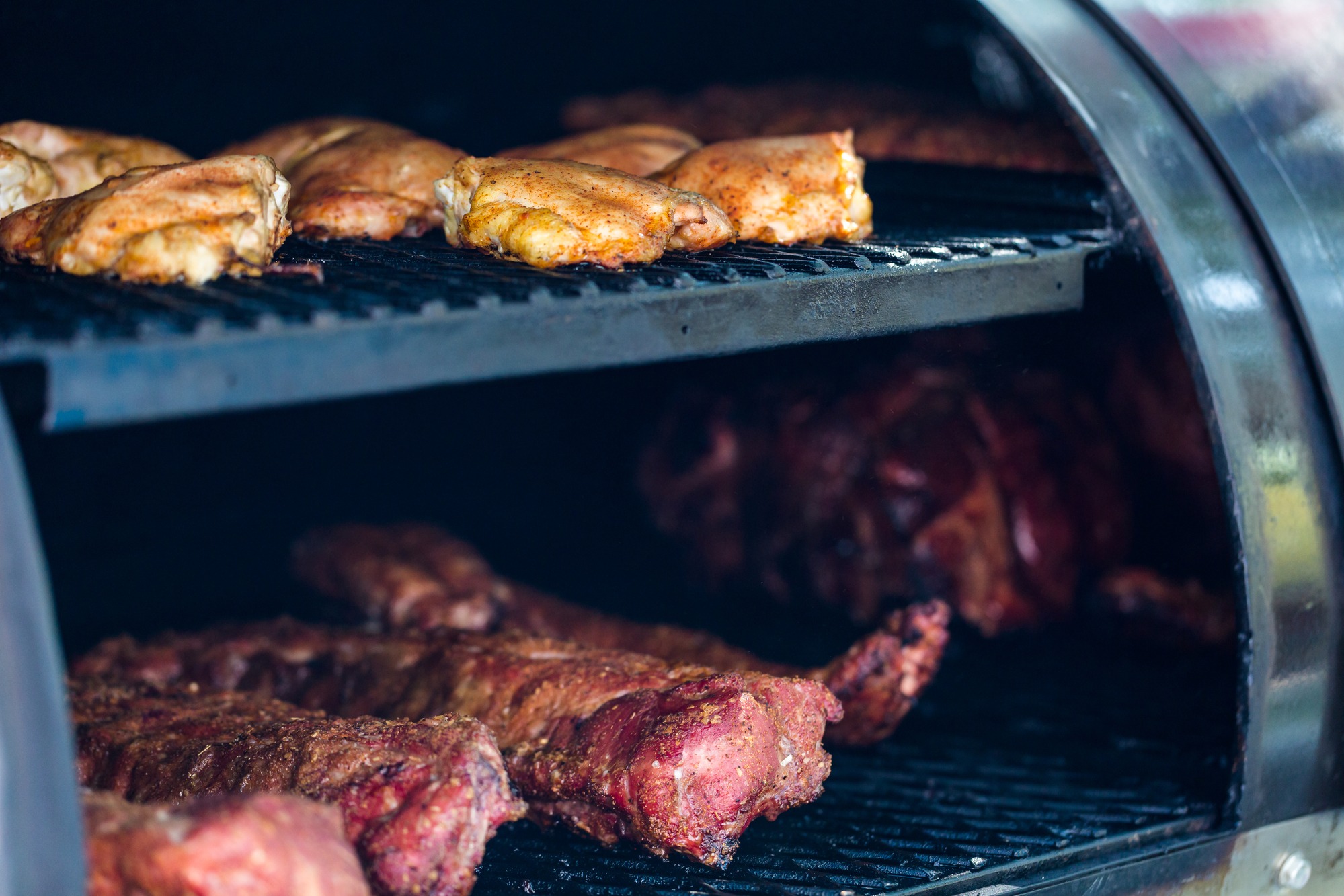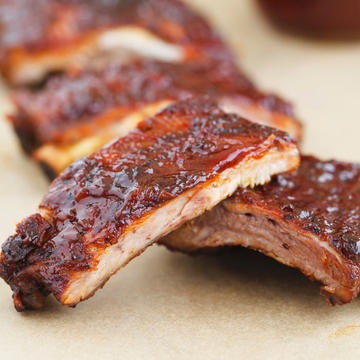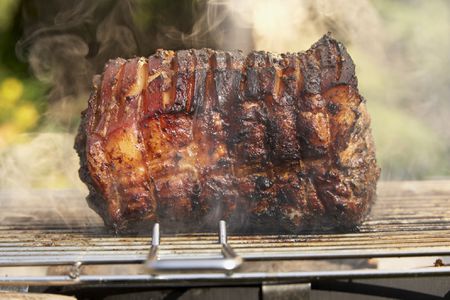
Perhaps it’s summertime, and you are preparing for the neighborhood cookout, or maybe it’s the middle of winter, and the family is riding out a record-setting snow blizzard. Either way, there is nothing to stop you from enjoying some tasty home-smoked meat. Explore this important importation about smoked meat and then get ready to make your own meat smoker so you can try out a new recipe today.
Benefits of Smoked Meat

Smoked meat has been part of the human diet since the days of the cavemen when meat was hung to dry and acquired the flavors of nearby campfire smoke. Many people enjoy smoked meat as opposed to grilled or broiled meat because of the rich flavors and tender texture. Additionally, including stockpiled, cured and smoked meat in your preparation pantry is a responsible way to make sure you and your family have a reliable source of protein on hand. A final benefit of smoked meat is that it is not necessary to buy all the smoked meat from the store. By using a DIY smoker, you can prepare an assortment of smoked meat to enjoy now or in the future.
Definition of a Meat Smoker

A meat smoker is a tool used to add flavor to food. When used along with salt-curing or drying processes, a meat smoker can be part of a preparation process to preserve meat in the long run. A meat smoker can also be used to add flavor to types of fish.
You can use almost any kind of meat in a smoker, with beef ribs and pork crown roast being two popular options. You can also smoke fish, such as salmon, and seasoned vegetables in a meat smoker.
How to Make Our Favorite DIY Smoker
There are all sorts of meat smokers from which to choose. Below are three of our favorite DIY meat smokers. One is a method of smoking meat with a pre-owned grill, the next is a simple way to transform a clay pot into a smoker, and the final option is for those ambitious welder-owning moms who want to convert an oil drum into a meat smoker.
Using a Charcoal or Gas Grill
This type of DIY meat smoker can be derived from either a charcoal or gas grill. It is the simplest method of smoking meat at home, and also the most economical because it uses a cooking device you may already own. One downside to this method is that once the smoking starts, you cannot use the grill for any other cooking until the smoking is finished.
Supplies:
- 1 gas or charcoal grill
- 1 drip pan
Process:
- Place drip pan under one side of the grill and charcoal under the other side.
- Follow the typical smoking process to prepare some meat.
Using an Unconventional Clay Pot
Friends and family will admire your creativity when you serve meat smoked in an unconventional clay pot. The one negative feature of this smoker is its small size. Only small quantities of meat, such as one chicken, can be smoked at a time.
Supplies:
- 1 clay pot 12-16 inches in diameter
- 1 grate that fits quarter of the way down the pot
- 1 electric hot plate capable of reaching over 1000 watts
- 1 clay pot cover
- 1 eye bolt and 1 bolt with 3 washers and 3 nuts
- 1 6-inch wooden dowel rod
- 6 brick pieces
- 1 metal pie pan
- 1 meat thermometer
Process:
- Drill or expand the hole at the bottom of the clay pot.
- Drill a hole at bottom of cover for the handle.
- Install the wood dowel rod handle with the bolts, washers and nuts.
- Place three 2-inch thick brick pieces in bottom of pot to hold up hot plate.
- Place hot plat in the pot.
- Place pie pan with wood chips on top of hot plate.
- Insert cooking grate.
- Add cover.
- Prop meat smoker pot on three brick sections with ventilation underneath.
- Get ready to smoke some meat.
Using Metal Work
Easily one of the more complicated DIY meat smokers, this method is recommended for people who have experience with welders and working with large sections of metal. It requires hard work and mathematical precision before resulting in a smoker capable of smoking large quantities of meat.
Supplies:
- 1 set of safety goggles and gloves per person
- 1 oil drum
- 1 welder
- 1 steel box section
- 1 angle grinder
- 1 hacksaw
- 1 ruler and tape measure
- 1 engineers square
- 1 center punch for hinge installation
- 6 steel sheet strips
- 3 sets of steel hinges
- 1 section of smoker chimney sized steel tubing
- 1 U shaped section of safety edging
- 1 BBQ temperature dial
- 1 drill with various sized bits
- 1 6mm steel round bar
- 1 stainless steel grill
Process:
- Take proper steps to dispose of anything inside the oil drum.
- Remove paint with angle grinder.
- Cut steel tubing at 45 degrees and weld together to form a chimney.
- Mark out one quarter of the oil drum with the marker and an engineer’s square.
- Cut out the quarter with the angle grinder.
- Weld steel strips along the drum sides to maintain shape.
- Clean newly exposed inner drum with de-greaser.
- Create supportive smoker frame with legs by using steel box section, hacksaw, and drill.
- Create hinge attachment holes with center punch in the drum and lid.
- Install U safety edging along lid and drum overlap seam.
- Make steel square section handle and weld to lid.
- Install steel bar inside smoker through holes and weld to support the grill.
- Drill ventilation holes in bottom of the drum.
- Weld grill in place.
- Get ready to smoke some meat.
How to Use Your DIY Meat Smoker
The flavor and texture of meat can be impacted by actions you take before smoking it. Consider applying the following two features before closing the lid of the smoker.
-
Wood Chip Type
Preferred wood chips for meats and seafood alike are oak and cherry. Hickory is nice for beef and pork, while alder is also recommended when smoking seafood, chicken or pork. Experiment with different flavors to see what you prefer while keeping in mind that chicken and seafood absorb more flavor than pork or beef.
-
Pre-Smoking Marinade
Marinating the meat before the smoking process contributes to a more tender texture and an additional flavor profile to the meat. Marinade recipes range from sweet to spicy and are usually applied up to 24 hours before the smoking process. One of the most popular options is a barbecue marinade that is usually applied one to two hours before smoking.
Once your chips are selected, the meat is marinated and the coals are hot, achieve a delicious smoked meat meal by using the following steps:
- Allow the smoker to reach a temperature of 200-250 F.
- Place wood chips over the heat source, whether that is a gas flame or lit coals.
- Place a drip pan containing liquid on the other side of the grill.
- Place meat over the drip pan.
- Close the grill and let the meat smoke for 2-3 hours or longer without flipping.
- Check meat for an internal temperature of at least 160F.
Storing the smoked meat
If you are not planning to store the meat for a long period of time, you can simply cut the meat into pieces and store in a container in the refrigerator. The meat can also be vacuum packed and then left in the freezer until consumption. You can stockpile smoked meat only if it was cured beforehand. Otherwise, it will go bad within the week.
Our Favorite Smoked Meat Recipes
Below are two of our favorite smoked meat recipes to help you get started with using your new meat smoker. The first is an option for uncured meat and the second is an option for cured fish.
-
Sweet Smoked Ham
- Season ham the night before with paprika and onion powder.
- Use hickory chips in meat smoker of your choice.
- Place a spiral ham shank in a roasting pan.
- Smoke ham in the meat smoker for at least three hours.
- Separately, simmer together butter, apple cider, brown sugar, molasses and bourbon on a stovetop for ten minutes.
- Pour syrup-like glaze over the smoked ham.
- Serve and enjoy.
-
Savory Smoked Salmon
- Place gutted and headless fish in a non-iodized salt, sugar and water brine solution for twelve hours.
- Rinse fish under cold water.
- Air dry for one hour.
- Use cherry chips in meat smoker of your choice.
- Smoke fish in the meat smoker for at least two hours.
- Remove fish and either store for later or enjoy the same day.
Smoking meat is a great excuse to try new flavor combinations and spend time outside with family and friends. Once your meat smoker is ready for action, consider exploring the local library or going online to uncover even more smoked meat recipes and recommendations.
Becky is a wildlife enthusiast and pet and livestock care expert with a diploma in canine nutrition. With over a decade of experience in animal welfare, Becky lends her expertise to Simple Family Preparedness through insightful info about pets, livestock, bee keeping, and the practicalities of homesteading.

